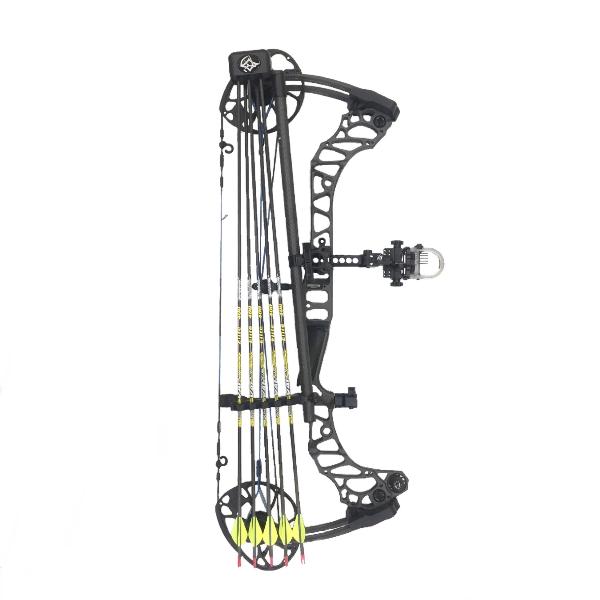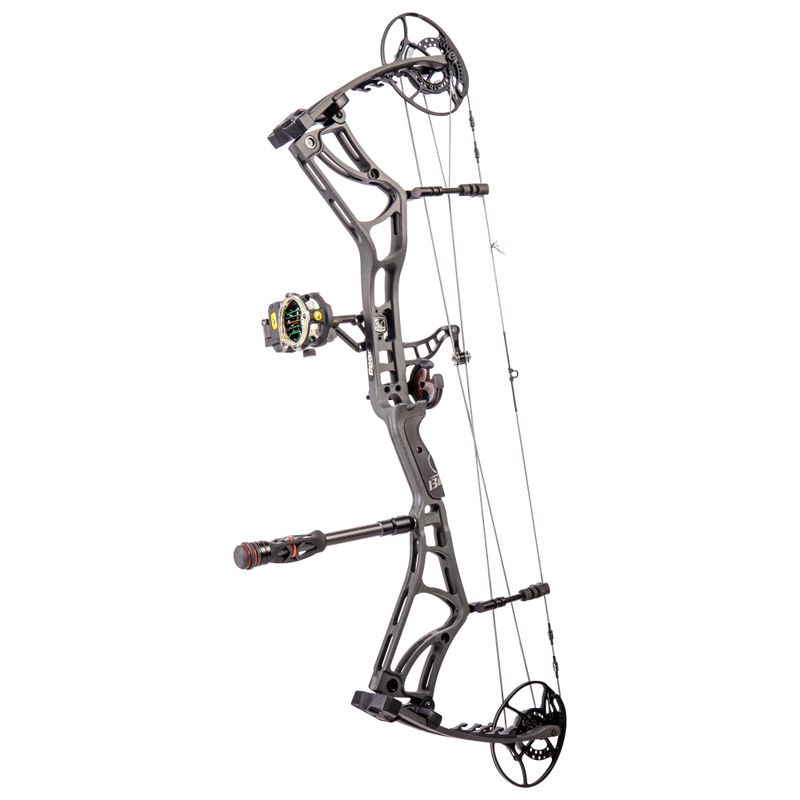Improve Your Accuracy: The Role of Archery Stabilizers
Wiki Article
The Ultimate Overview to Choosing the Right Archery Stabilizer for Boosted Accuracy
Among the different devices available, an archery stabilizer plays a substantial duty in enhancing precision. In this extensive guide, we will certainly explore the crucial elements to consider when choosing an archery stabilizer for boosted accuracy. Whether you are a skilled archer looking to update your equipment or a novice looking for advice, join us on this journey as we unwind the keys to choosing the excellent archery stabilizer.Length: Locating the Optimal Stabilizer Size
When selecting an archery stabilizer for optimum efficiency,Determining the ideal stabilizer size is important. The size of a stabilizer straight influences the balance, security, and accuracy of the bow. A stabilizer that is also long can make the bow feel top-heavy and tough to regulate, while a stabilizer that is also short might not offer enough security and dampening of vibrations. Discovering the best size requires taking into consideration elements such as the archer's shooting design, bow weight, and personal preference.A longer stabilizer, normally varying from 8 to 12 inches, can offer better security and reduce bow torque. This is especially beneficial for archers that shoot with a high draw weight or those that have a propensity to torque the bow during the shot. The added length assists to distribute the weight evenly and counterbalance any torque or movement.
On the various other hand, a shorter stabilizer, usually in between 4 to 7 inches, offers a lot more maneuverability and quicker reaction. It is favored by archers who shoot with a lower draw weight or those that need more flexibility, such as seekers or 3D shooters. The shorter size allows for simpler motion via limited areas and faster adjustments.
Inevitably, the optimal stabilizer size refers personal choice and shooting style. It is advised to try out various lengths and observe the impacts on stability and accuracy. Consulting with seasoned archers or experts can additionally supply valuable insights and recommendations.
Weight: Establishing the Appropriate Stabilizer Weight
After taking into consideration the ideal stabilizer length, the following important aspect to take into consideration when choosing an archery stabilizer is establishing the appropriate stabilizer weight - archery stabilizer. The weight of the stabilizer plays a critical function in enhancing precision and stability during the shotThe weight of the stabilizer impacts the equilibrium and control of the bow. A heavier stabilizer can supply increased stability and control, specifically for shooters with a propensity for inconsistent shots or shaky hands. It aids to take in the resonances and recoil created by the bow, decreasing torque and minimizing the result on the arrowhead's trip.
On the other hand, a lighter stabilizer enables a quicker and a lot more receptive bow. It can be helpful for shooters who prioritize maneuverability and speed over stability. Lighter stabilizers additionally lower exhaustion throughout lengthy shooting sessions or competitions.
To identify the suitable stabilizer weight for your needs, it is very important to consider your capturing style, physical strength, and bow configuration. Exploring with different weights and observing the influence on your capturing efficiency is essential to finding the perfect equilibrium.
Inevitably, the optimum stabilizer weight will vary for each specific archer. It her latest blog is suggested to begin with a modest weight and make adjustments based upon individual choice and shooting results. Bear in mind, the goal is to attain a stable and controlled shot, while additionally preserving comfort and simplicity of use.
Products: Choosing the Right Products for Resilience and Efficiency
When choosing an archery stabilizer, it is vital to meticulously take into consideration the products made use of in its building and construction to make sure resilience and optimize efficiency. The choice of materials can substantially influence the overall high quality and performance of the stabilizer.One of the most commonly utilized products for stabilizers is carbon fiber. Furthermore, carbon fiber stabilizers are immune to temperature adjustments and are much less likely to warp or bend over time.
Another preferred material for stabilizers is aluminum. Aluminum stabilizers are recognized for their longevity and rigidity. They give exceptional wetting capabilities, decreasing the quantity of shock and vibration moved to the shooter's hand. Light weight aluminum stabilizers likewise use a variety of customization options, allowing archers to readjust the weight and size to suit their choices.
Some stabilizers are constructed using a combination of materials. As an example, a stabilizer might have a carbon fiber core wrapped in an aluminum shell. This hybrid style integrates the most effective top qualities of both products, providing ideal security, resilience, and efficiency.
Style: Understanding the Various Stabilizer Styles and Their Effects
more information Considering the materials utilized in archery stabilizers, it is necessary to now dive into the various layouts of stabilizers and their corresponding results. The layout of an archery stabilizer plays a critical function in improving precision and lowering vibration throughout the shot. There are a number of different designs available in the market, each with its very own distinct qualities.
Another popular design is the side bar stabilizer. This style involves connecting a brief rod to the side of the bow, alongside the main lengthy rod. Side bar stabilizers assist in counterbalancing the weight of devices, such as sights or quivers, and provide added security to the bow.
Some stabilizers feature flexible weights. These stabilizers permit archers to adjust the balance and feeling of their bows by adding or removing weights. This function is particularly helpful for archers who choose a particular weight distribution or want to trying out various setups.
Moreover, some stabilizers incorporate dampening innovation to decrease vibration and noise. These stabilizers usually have built-in dampeners or utilize products that absorb vibrations, leading to a smoother and quieter shot.

Devices: Discovering Added Devices for Improved Stability
These devices are designed to work in conjunction with the archery stabilizer to supply an also better degree of stability and precision. One such accessory is the V-bar or the side stabilizer mount.Another device that can enhance security is a bow sling. A bow sling is a strap that affixes to the bow and enables the archer to maintain a relaxed hold on the bow manage without the anxiety of dropping her response it (archery stabilizer). This kicked back grasp aids to lower muscular tissue tension and permits a more consistent and stable shot
In addition, a stabilizer weight system can be made use of to adjust the balance and stability of the bow. These weight systems generally contain small weights that can be added or eliminated from the stabilizer to change the equilibrium factor of the bow. By locating the optimum equilibrium factor, archers can accomplish a much more stable and accurate shot.
Final Thought
In conclusion, choosing the appropriate archery stabilizer includes taking into consideration variables such as size, weight, products, layout, and additional accessories. The ideal stabilizer size and weight will depend on specific choices and shooting design.Figuring out the perfect stabilizer length is important when choosing an archery stabilizer for optimum efficiency. A stabilizer that is too long can make the bow really feel top-heavy and difficult to regulate, while a stabilizer that is as well short might not offer adequate stability and dampening of resonances - archery stabilizer.Taking into account the products used in archery stabilizers, it is crucial to currently dig into the various styles of stabilizers and their respective results. Side bar stabilizers assist in reversing the weight of accessories, such as sights or quivers, and give added security to the bow
These weight systems typically consist of small weights that can be added or gotten rid of from the stabilizer to adjust the balance point of the bow.
Report this wiki page